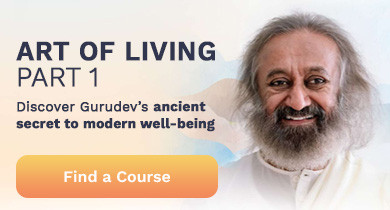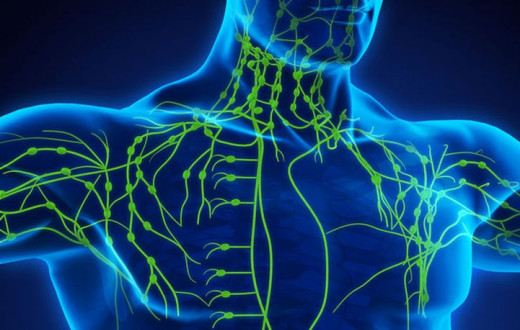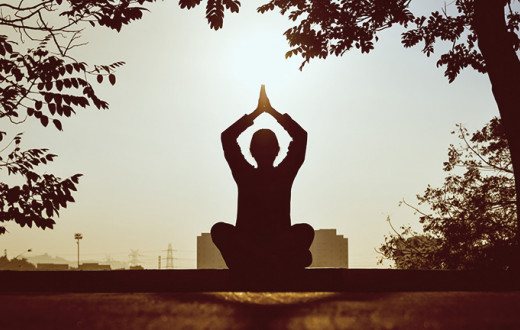By Sejal Shah | Posted: December 17, 2019
One of my friends called me about 3 weeks ago, seeking my guidance to help her deal with severe fibromyalgia pain that she has been suffering from for more than 10 years. She has been very reluctant to undergo any conventional treatment or to take a painkiller, and has been managing her pain with alternative modes of treatment, following a strict Ayurveda diet regiment. However, for the last 2-3 months, the frequency of her pain flare-ups have increased, making her life difficult. She finally went to her conventional allopathic doctor, who prescribed her medicine to manage her severe pain, and advised her to start physical therapy after the pain was at a manageable level. This was the point when, not wanting to take any pain medication, she called me asking if yoga therapy is advisable during her painful flare-ups, and whether it would actually make her pain worse. She was naturally quite worried.
I suggested to my friend that she starts off very gradually with a special joint-freeing gentle yoga sequence for 15-30 minutes, and if that felt good, I suggested that she increase the duration of her practice to 60 minutes. For the first couple of days, she was hesitant to do this, thinking her pain would increase. But with a little encouragement, she gave it a try. Two days ago, she told me the following:
“Have been doing all my work without too much pain since I started yoga. Went on a one and a half hour hike last week and did quite well. My physician called me now to ask how I was doing. I told her about you and how much yoga has helped me and she wants your contact and details. She wants her other patients also to follow this as it is helping me.”
For the nearly 10 million people who suffer from fibromyalgia, the thought of any movement can be overwhelming. Dealing with pain, day in and day out, can be extremely tiring. Most people literally want to avoid any movement, and to forget about doing any exercises. But there is ample evidence to suggest that exercise, movement and body awareness, and muscle strength training may in fact help with pain management. With more research and my experience of helping people with fibromyalgia with yoga, I dove into learning more about this condition, and how yoga’s gentle movements, coordinated with breath, could be a boon for sufferers.
While medical science is not promising any definitive cure for fibromyalgia, there is surely hope for pain management and relief either through pain medications or movements and exercises. But first, we need to understand the nature of this condition.
What Is Fibromyalgia?
Fibromyalgia is a chronic pain disorder that affects up to 10 million Americans, most of them women aged 40–75 years. It is a syndrome of whole-body pain and debilitating fatigue, associated with a decreased pain threshold or tender points, sleep disturbances, cognitive changes, mood disturbances, anxiety, depression, and other variable somatic symptoms.
Fibromyalgia can mimic other illnesses, such as chronic fatigue syndrome, rheumatoid arthritis, or osteoarthritis, and because there is no definitive lab or imaging test for the condition, the diagnosis is tricky and some physicians tend to question its validity. Doctors often consider fibromyalgia to be a type of arthritis. As with typical arthritic conditions, fibromyalgia causes pain. But unlike arthritis, it does not cause significant damage to muscles or joints.
There are 18 tender points or “trigger points” in the body when one suffers from this condition. If one experiences tenderness in 11 of these 18 points, they are diagnosed with fibromyalgia. These trigger points include the knees, the hips, the outer elbows, the top of the shoulders, the back of the head, and the upper neck.
The real reason fibromyalgia crops up is unknown. However, it is likely that physical trauma, stress, or even the flu can cause flare-ups. Fibromyalgia symptoms arise because the nerves and brain misinterpret or overreact to normal pain signals. This could also be because of an imbalance in the chemicals in the brain.
How Does Yoga Help To Relieve Fibromyalgia?
Yoga is one of the more commonly recommended forms of exercise for fibromyalgia. Although not a cure for fibromyalgia, yoga is an excellent therapy for this condition. Yoga is also ideal because it can be adapted to each person’s specific needs.
Yoga's controlled movements and gentle pressures reach deep into troubled joints and muscles, releasing the tension trapped within them and thus helping to build strength, flexibility, and balance, in turn reducing arthritic pain and stiffness.
In addition, controlled stretches, in conjunction with deep breathing exercises, relax and release the muscles that have held up around the joints, increasing range of motion.
Strength-building poses build muscles around the joints and help to nourish them. Flexibility-building poses open up the joints and increase blood, oxygen, and energy circulation. Shavasana, done at the end, rejuvenates the body based on the energy one has acquired from practicing yoga postures.
Yoga postures also increase blood circulation and energy flow to the affected areas, and tone up the muscles there. As a result, the circulation of blood in these areas becomes normalized, the supply of synovial fluid (joint fluid) is restored, and spasticity and pain are eliminated.
Yoga is also known to relax the mind and reduce stress: a key trigger of this condition. Some people treat yoga just as an exercise, but when done in the traditional way, which emphasizes controlled breathing and awareness, it also can help you relax, calm and focus your mind, and deal with the emotional turmoil that results from pain and disability, and increasing positive feelings and wellbeing.
Yoga practice helps in releasing natural pain killers, like endorphins, into the body.
What the research says
People practice yoga as an alternative therapy for many health issues.
There have been many studies carried out looking at the potential benefits of yoga for people with fibromyalgia.
In one study, participants had more days when they "felt good" and were less likely to miss work due to pain. In another study, researchers found that yoga helped reduce sleep disturbances, fatigue, and depression while also improving the quality of life. In one study done in 2010, participants reported significant improvements in measures of pain, fatigue, and mood relating to fibromyalgia.
Yoga poses for fibromyalgia
Try this gentle joint freeing sequence (Sukshma Vyayam) with slow, soft breathing. Click here to try this yoga sequence with a video! This routine is very useful during periods of severe pain flare-ups.
This all-directions back stretch can help you quickly relieve all the tenderness and stiffness in your back and neck.
When pain is milder, other useful yoga postures are Tadasana (realigns and relaxes your body), Uttanasana (opens up the entire back), Veerabhadrasana (strengthens the muscles of the legs, back, and arms), Viparita Karani (reduces swelling and fatigue in the legs), Shishuasana (relaxes the back and calms the mind), Sphinx and Bhujangasana (opens up your front body and chest and relieves pain in neck and back), Baddha Konasana (a whole lot of stress is trapped within the hip and thigh muscles), Natarajasana (releases tension from the whole spine), and Savasana (brings a complete restoration in the body, allowing both the organs and the muscles to relax completely).
Breathing practices like Breath of Joy, Full Yogic breathing, Breathe of Victory (Ujjayi), and Alternate Nostril (Nadi shodhana pranayama) can relax your mind as well energize your body, relieving fatigue.
Strengthening and Healing Contractions or SAHC Meditation, Panchkosha Meditation (both taught at Sri Sri Yoga Deep Dive Retreat) can help you manage your pain on a long-term basis.
Get rid of toxins stored in your digestive system by doing a Gastric Wash—Short Shankhaprakshalana (once a month) and Long Shankhaprakshalana (once in six months). First learn this under supervision under a trained instructor at the Sri Sri Yoga Deep Dive Retreat. Never try it on your own, as it is very intense process and can worsen your condition if not done properly.
Getting started with yoga
If you are new to yoga, as when starting any exercise routine, you should first check with your doctor to make sure it's safe for you. Once you've got the official okay, it's best to proceed very slowly and only under the guidance of a trained teacher. Try one or two gentle poses a day, and pay close attention to how they make you feel. Most importantly, while you practice, you must listen to your body, and stop when it asks you to stop. Also, don’t forget your breath. Once you're sure that your yoga routine is not exacerbating symptoms, you can start slowly adding more. Closely work with your yoga teacher or therapist and your physician.
If a yoga teachers is not available in your area and if you're doing a self-guided program, be sure you fully understand the poses before trying them and be sure to start with simple ones. A video or a book with good pictures can be very useful.
My final two cents
Accept your pain: don’t resist or fight with it. With a calm mind, find out ways to deal with it. Be patient and don’t lose hope. Know that breath-synchronized movement is the key!
Hope you feel better and heal soon. Blessings.
Disclaimer: This content on the Art of Living Blog is not intended to be a substitute for professional medical advice, diagnosis or treatment. Always seek the advice of your physician or other qualified health providers with any questions you may have regarding a medical condition. Any links to third-party websites are provided as a convenience only and the Art of Living Blog is not responsible for their content.
Sejal Shah, E-YRT 500 Sri Sri Yoga Teacher, YACEP, Meditation Teacher, Happiness expert, NYU Post Graduate Medical School approved Yoga-CME retreat facilitator, Mind-Body Wellness Writer, Homeopath. She can be followed on Instagram, Twitter, and Facebook.





























